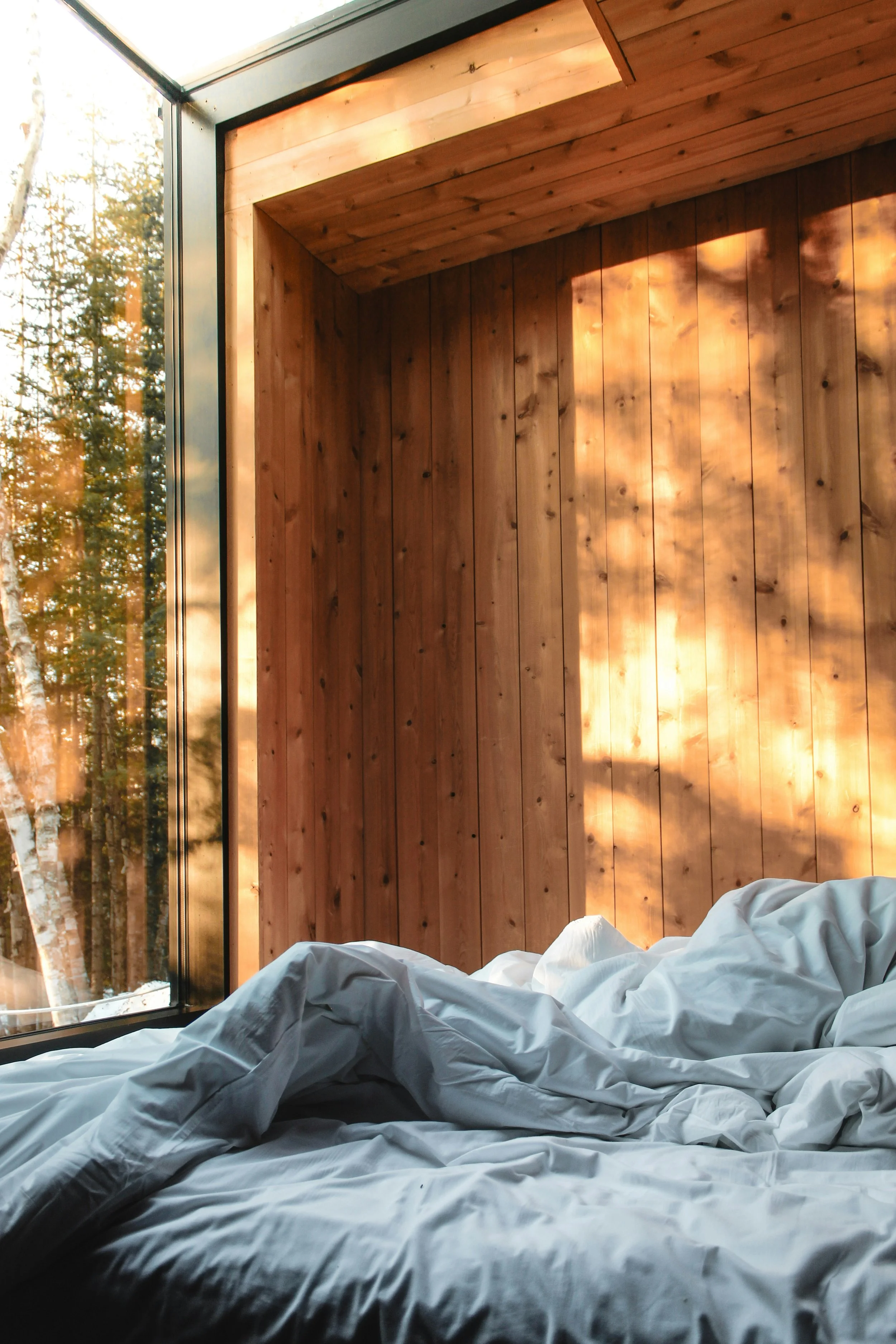Sleep Essentials Kit
Tips for Athletes to Get a Better Night’s Sleep
By Alyssa O’Krent of AOK PT
At AOK Physical Therapy, we understand that optimal health is not just about the physical recovery of your body but also about ensuring that your mind and body work in harmony. One of the most crucial aspects of this harmony is sleep.
We are excited to introduce a series of sleep optimization tips, inspired by the renowned Huberman Lab Podcast, hosted by the esteemed Dr. Andrew Huberman. These science-backed strategies are meticulously designed to help you achieve better sleep, which is a foundational element for physical recovery, mental clarity, and overall health.
Good sleep is not just about feeling rested; it’s a pillar of your overall wellness. Sleep influences everything from your immune system to your cognitive function, mood, and even your physical strength. Therefore, improving your sleep quality can have profound effects on your overall health and well-being, especially if you are in the process of physical rehabilitation.
Why Sleep Matters for Your Health
Before diving into the actionable tips, let’s explore why sleep is so essential. Sleep is the body’s natural repair mechanism. During sleep, especially during deep sleep stages, your body undergoes vital processes that are necessary for healing and restoring energy. For patients recovering from physical ailments or injuries, these processes are crucial. Proper sleep ensures that your muscles can recover from daily wear and tear, your immune system can fight off infections, and your mind remains sharp and focused.
The Sleep Fundamentals: QQRT
To better understand how to optimize your sleep, let’s delve into the four fundamental aspects of sleep, summarized by the acronym QQRT: Quantity, Quality, Regularity, and Timing.
Quantity: The amount of sleep you get each night is pivotal. The typical adult requires between 7 to 9 hours of sleep per night. This range allows sufficient time for both deep sleep and REM (Rapid Eye Movement) sleep, which are critical for physical recovery and mental processing. However, individual needs can vary. Babies, teenagers, and individuals recovering from illness or injury may require more sleep, while some adults may function well with slightly less. Understanding your unique sleep needs is the first step toward optimizing your sleep.
Quality: Quantity alone is not enough—quality is equally, if not more, important. Good sleep quality is characterized by uninterrupted and structured sleep cycles. This means minimal awakenings during the night and a smooth transition between the different sleep stages. Poor sleep quality often manifests as fragmented sleep, which can leave you feeling tired and unrefreshed even after a full night’s rest. Using wearable sleep trackers can help measure your sleep efficiency, which is the percentage of time you spend asleep while in bed. Aim for a sleep efficiency rating of 85% or higher. However, be cautious not to over-monitor, as this can lead to sleep anxiety, a condition known as "orthosomnia." Instead, consider reviewing your sleep data weekly to get a broader perspective.
Regularity: Consistency in your sleep schedule is key to maintaining a healthy sleep cycle. Regularity refers to going to bed and waking up at the same time every day, even on weekends. This regularity helps anchor your body’s internal clock, or circadian rhythm, which plays a vital role in regulating sleep. Strive to maintain your sleep schedule within a 30-minute window to help improve sleep quality.
Timing: Finally, the timing of your sleep is important. This refers to aligning your sleep schedule with your natural chronotype—whether you are a morning person or a night owl. Your chronotype is influenced by your genetics and determines when your body naturally feels tired or alert. Tools like the Morningness-Eveningness Questionnaire (MEQ) can help you identify your chronotype, allowing you to adjust your sleep schedule accordingly. Sleeping out of sync with your natural chronotype can result in poorer sleep quality and leave you feeling groggy and unrefreshed.
Determine Your Sleep Quality
Once you understand the fundamentals, the next step is to assess your current sleep quality. Ask yourself how you feel upon waking up. Do you feel refreshed and ready to start the day, or do you feel like you could use a few more hours of sleep? If you often feel the latter, it may be time to implement some sleep hygiene strategies to improve your sleep quality.
Sleep Hygiene Basics
Sleep hygiene refers to the habits and practices that contribute to a good night’s sleep. Here are some essential tips:
Light & Dark: Melatonin, the hormone responsible for regulating sleep, is inhibited by bright light. To promote better sleep, dim the lights in your home in the evening and minimize screen time. The blue light emitted by screens can significantly disrupt melatonin production. Consider using blackout curtains or an eye mask to maximize darkness in your bedroom, which can help you fall asleep faster and stay asleep longer. In the morning, expose yourself to natural sunlight for 10-15 minutes to help reset your circadian rhythm.
Temperature: The temperature of your sleeping environment can greatly affect your sleep quality. A cool room, around 67°F (19.4°C), is ideal for most people. Consider using a temperature-controlled mattress cover to maintain this optimal sleeping temperature. Additionally, if you find yourself too warm at night, try sticking your hands or feet out from under the covers, as this can help regulate your body temperature. A warm bath or shower before bed can also aid in sleep by initially raising your body temperature, which then drops afterward, signaling to your body that it’s time to sleep.
Food & Meal Timing: Eating large meals close to bedtime can lead to discomfort and disrupt your sleep. To avoid this, try to finish eating at least two hours before bed. This allows your body enough time to digest, reducing the likelihood of gastric reflux, which can disturb your sleep. Also, be mindful of fluid intake in the evening to prevent frequent nighttime awakenings.
Caffeine: Caffeine is a stimulant that can interfere with sleep if consumed too close to bedtime. It’s best to avoid caffeine 8-10 hours before you plan to sleep. This includes coffee, tea, chocolate, and certain medications. Caffeine temporarily masks sleepiness and can lead to lighter sleep and more frequent awakenings.
Wind-Down Routine: Establishing a relaxing bedtime routine can signal to your body that it’s time to wind down and prepare for sleep. This might include activities such as reading a book, practicing meditation, or listening to calming music. Avoid stimulating activities like watching television or engaging in strenuous exercise right before bed, as these can make it harder to fall asleep.
Alcohol: While alcohol may initially help you fall asleep, it often disrupts sleep later in the night. Alcohol can lead to fragmented sleep and reduce the overall quality of your rest. It’s best to limit alcohol consumption, especially close to bedtime, to ensure you get the restorative sleep your body needs.
Trouble Falling Asleep?
If you find yourself tossing and turning at night, unable to fall asleep, try these tips:
Walk It Out: If you can’t fall asleep within 20-25 minutes, it’s better to get out of bed and engage in a relaxing activity than to lie there stressing about it. This helps prevent your bed from becoming associated with wakefulness, which can create a negative sleep pattern.
Do Nothing: After a poor night’s sleep, resist the urge to sleep in, go to bed early, or consume excessive caffeine. These compensatory behaviors can disrupt your natural sleep-wake cycles and make it harder to get back on track.
Mental Walk: If your mind is racing at bedtime, try visualizing a familiar, relaxing route, such as a walk through your neighborhood or a stroll along the beach. This technique can help redirect your focus and make it easier to fall asleep.
Limit Daytime Naps: While naps can be beneficial, keep them short (20-30 minutes) and avoid napping late in the day. Long or late naps can interfere with your nighttime sleep, making it harder to fall asleep when you need to.
Additional Resources
These tips should provide a solid foundation for optimizing your sleep and enhancing your overall health. If you’re looking for more in-depth information and tools to improve your sleep, consider subscribing to our popular newsletter, "Toolkit for Sleep." This resource is packed with actionable tools and protocols to help you achieve the best sleep possible.
Final Thoughts
Improving your sleep is one of the most effective ways to boost your health and well-being. By implementing these strategies, you can transform your sleep patterns and start reaping the benefits of restful nights and energized days. Remember, the insights shared here are credited to Dr. Andrew Huberman and the Huberman Lab Podcast, a valuable resource for science-backed health strategies. We encourage you to explore their content further for more detailed information.
Thank you for being a part of the AOK Physical Therapy community. Your health and wellness are our top priorities, and we are committed to providing you with the resources you need to thrive. Here's to better sleep and a healthier you!





